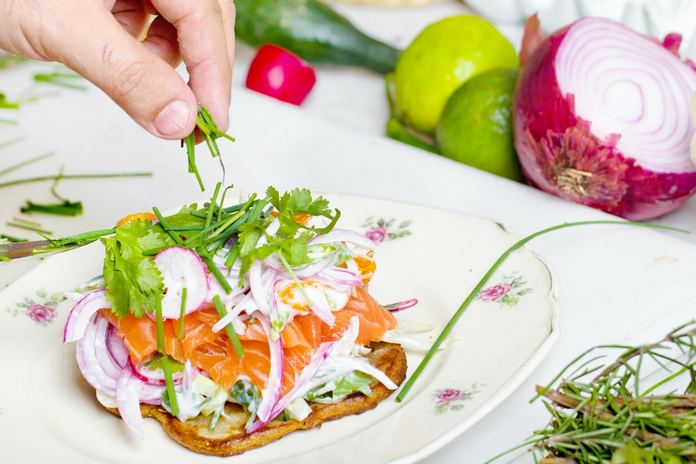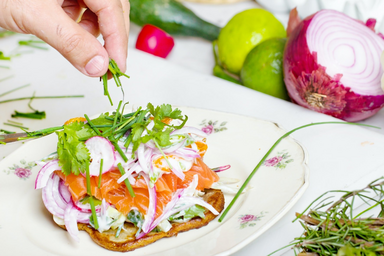Ah yes, aloe vera. While you might have seen a small potted plant in your mom’s kitchen for the occasional burn, this particular plant has been put to a variety of uses for over 4,000 years! The ancient Egyptians used it for beauty and vitality, and for good reason. Its leaves contain a gel that’s packed with an amazing 20 of the 22 essential amino acids, and it’s great for your skin! With fresh leaves being widely available now, aloe is usually near the top of my shopping list, and I decided to share just a few of the ways I’ve put it to use. Remember that it’s always best to use aloe gel in its pure form, and that can usually be found in a natural foods store or section of your grocery store. Filleting your own leaf takes a few tries to master, but it’s very rewarding! Here’s a by-no-means-complete list of different uses for this marvelous plant. (Disclaimer: if you find that aloe leads to any sort of irritation, either to your gut or to your skin, please discontinue use! Allergens are no fun, and your health is important! In addition, this article was not written by a physician, and as such, will not replace the qualified advice of a health professional.)
For skin:
- Use it as a moisturizer! Aloe is incorporated into lots of different cosmetic products already, but if you want to cut out the middleman, apply the gel directly to your face and body, or if you want something cooling and revitalizing, try a sheet mask. This one is my favorite, and contains 10 masks for less than $10! I use one or two every week, and I love how supple my face feels afterward.
- Amazingly, aloe works great on both minor burns and frostbite! For both, apply the gel twice a day. This works for both because aloe encourages blood flow to the affected area, and helps your body complete the natural healing process. And it does wonders for sunburn. (Remember that for serious burns or frostbite of any kind, please contact a qualified medical professional about proper treatment.)
- It can also be applied to cold sores, dermatitis and rashes, and personally, I’ve found that mixing ½ part gel to two parts water and swishing in your mouth softly for 2-5 minutes will help soothe mouth sores as well.
For consumption: There is a host of recipes incorporating aloe, but a word of caution: eating too much aloe gel can lead to, shall we say, intestinal consequences. (You’ll poop. A lot.) That being said, aloe is an effective treatment for constipation and contains lots of fiber to help your gut run smoothly. Honestly, the best culinary use for gel is in a smoothie. Here’s a refreshing recipe that Jordyn and myself created this past summer:
Ingredients:
1 medium-sized aloe vera leaf
1 fresh or canned mango
2 cups of pineapple juice
½ cup of dairy or almond milk
½ cup of ice
Directions: Filet the aloe leaf, and scoop the gel into your blender. Use about 1-1 ½ cups and set the rest aside for future use. (It only keeps for 3-4 days in the fridge.) Chop both sides of the mango, avoiding the hard pit, and scoop the meat out into the blender with the gel. Add the milk, ice, and pineapple juice and puree until smooth. (Optional: cut and freeze the mango beforehand so adding ice is unnecessary.) Pour into a glass and enjoy! Yield: two servings.
This is just one recipe, but you can be as creative as you want! Aloe vera makes a great addition to nearly any fruit-based smoothie recipe, and gives them that extra healthy kick! Keep in mind it does have a bitter taste, so you will probably need to counter that with a little sweetness. Maybe substitute mango for watermelon or any other juicy, sugary fruit. Happy aloe-ing!
(Thumbnail by Cari Corbet-Owen on Unsplash)


